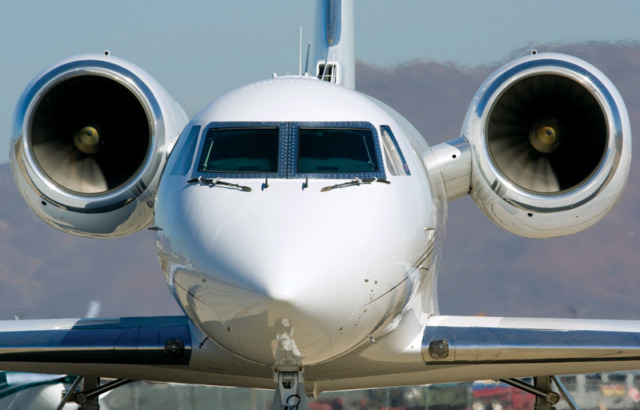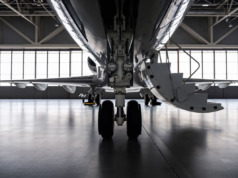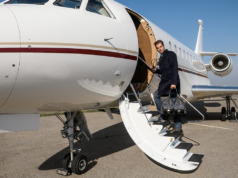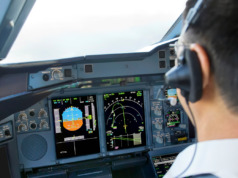
The National Transportation Safety Board (NTSB), charged by Congress to monitor, investigate, and report publicly on all civil transportation safety issues, also makes recommendations to guide the FAA’s regulatory efforts to prevent accidents, minimize injuries, and save lives. On the NTSB’s ten “Most Wanted List,” five items apply to aviation.
What do you, your management company, flight crew, and passengers need to know, and what actions do you need to take now to be safe?
1 Eliminate Distractions – The increasing use of personal electronic devices, the erroneous belief that performing pilot duties while multitasking is safe, and crew loss of situational awareness can be devastating. In 2014, the FAA increased “sterile cockpit” regulations, which prohibit distracting personal activities during critical phrases of flight, to prohibit on-duty pilots from engaging in nonessential communications, or using mobile phones, laptops, or tablets for personal use. These rules should be extended to all safety-critical personnel, including crew, maintenance technicians, and ramp workers. As an aircraft owner, you can institute a cultural norm in your organization that “texting while flying” is unacceptable. To paraphrase the old song, instruct your pilots to “Keep your mind on your driving, keep your hands on the yoke.”
2 Reduce Fatigue-Related Accidents – Fatigue degrades the ability to be attentive to the demands of operating, directing, and maintaining aircraft. “Pilots and other aviation safety-critical personnel may not recognize the effects of fatigue until it’s too late,” says the NTSB. While fatigue often results from insufficient sleep, it also can be caused by medical conditions, stress, or unpredictable work schedules. Duty-hour regulations mandate a prescribed number of hours a pilot must be off work or resting. But whether or not the pilot actually rests is self-reported. And other aviation safety personnel are not regulated as closely. Although fatigue prevention is covered in flight training, Part 91 pilots have no such restrictions. See that your operation (or management company) implements and continually monitors a comprehensive fatigue-management training system for all personnel (See “Longer Flights, Safer Flights,” BAA May/June 2017).
3 End Alcohol and Other Drug Impairment – Many commonly-used over-the-counter (OTC) and prescription drugs have side effects which can impair the pilot’s ability to fly, and may not be easily recognized. “The most commonly found impairing substance in fatal crashes,” reports the NTSB, “was diphenhydramine, a sedating antihistamine found in over-the-counter allergy, cold, and sleep-aid medications.” Since aviation accidents caused by impaired operators are completely preventable, require your pilots to be familiar with the Aeronautical Information Manual’s “I’M SAFE” checklist, to help them assess their readiness for flight. Create a culture in which all flight and ground crew members are encouraged to anonymously report concerns related to safety without fear of retribution.
4 Improve the Safety of Part 135 Aircraft Flight Operations – While the FAA considers air taxi, charter and on-demand flights to be “commercial flights,” it does not require them to meet the same safety standards as commercial airlines. Whether you operate under Part 91 or 135, it is up to you and/or your management company to ensure the highest level of safety for your aircraft, crew, and passengers by implementing a Safety Management System (See “Safety Guards,” BAA November/December 2016).
5 Strengthen Occupant Protection – You, your passengers, and your crew can help avoid serious injuries by wearing seat belts or shoulder harnesses. Ensure that any children aboard your aircraft, even those younger than age 2 (who are not required to do so by law) be secured in their own seat by a child safety restraint system. Regularly review your evacuation and crashworthiness procedures with your crew and with frequent passengers. Train commercial flight and cabin crews in procedures to conduct timely and professional evacuations when conditions warrant.
Taking these actions now will help ensure safety: every flight, every time. BAA
Ryan Waguespack joined the National Air Transportation Association (NATA) leadership team in November 2018 as Senior Vice President of Aircraft Management, Air Charter Services, and MROs – advancing a number of programs and efforts, including leading the charge in helping to end worldwide illegal charter activities, raising awareness of the value of aviation businesses to communities surrounding GA airports, overseeing the expansion of NATA’s training program platform, and assisting hundreds of aviation businesses navigate financial and regulatory relief programs.
As NATA’s Executive Vice President, Waguespack led its regulatory, industry, and member outreach efforts and programs, while taking on additional responsibility for safety program development.
Waguespack formerly was Vice President of Business Development at Summit Aviation and served in various business development roles for charter and management operations, as well as aircraft sales. He is the founder and owner of General Aviation Consultants in Birmingham, AL, and founded the Alabama Business Aviation Association in 2015. He is a frequent speaker at international, national, and state conferences.





